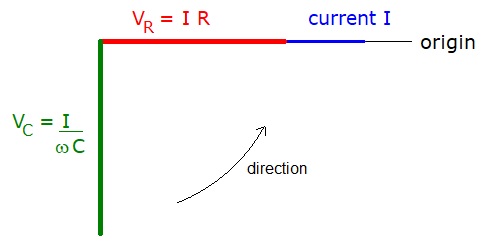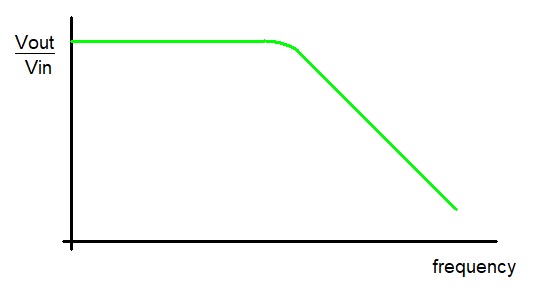
Capacitors in AC circuits
Introduction to the sine wave formula
An alternating current can be represented by
I = I0sin(ωt),
where I0 is the amplitude of the current and ω = 2π×frequencyFor an ideal resistor, using Ohm's Law, the alternating voltage across a resistor, R, is give by
V = R×I0sin(ωt),
As can be seen from the current and voltage formulae, they are always in phase.For a capacitor, the voltage across the capacitor is given by the charge, Q, divided by the capacitance, C, => V = Q/C
The charge is given by Q = ∫I.dt


For an ideal capacitor, the ratio of the applied voltage to the current passing through is called the reactance, Xc.
This should be compared to Ohm's law where the ratio of voltage to current is called resistance.


A capacitor and resistor in series.

I = I0sin(ωt),
and is the same through both the resistor and capacitor as they are in series.=> The voltage across the resistor, R, is
VR = RI0sin(ωt),
and is in phase with the current.=> The voltage across the capacitor, C, is

To make sense of what this means, it is helpful to represent these voltages and currents on a diagram.

Since VC and VR are not in phase they must be added as vectors


Containing both resistance and reactance, it is called the Impedance of the circuit with the symbol Z.
Z = √(R2 + XC2)
The power supply voltage is out of phase with the current by angle θ, where tanθ = VC/VR
RC Potential Divider
Looking at this circuit again and using the Potential Divider formula


=> when ω is small, Vout/Vin ≈ ωRC and
when ω is large, Vout/Vin ≈ 1



=> when ω is small, Vout/Vin ≈ 1 and
when ω is large, Vout/Vin ≈ (-)1/ωRC

AC Circuits in Complex Form
It is very convenient to use Complex numbers for processing AC calculations.
The real axis represents Resistance. Power is only dissipated in pure (real) resistance.
The imaginary axis represents Reactance. Power is NOT dissipated in reactance (averaged over a time period).
Unfortunately, i is the symbol used to represent current.
To avoid confusion in circuit calculations, j is used to represent √(-1)
Capacitive reactance, XC, becomes -j/ωC
Multiplying top and bottom by j gives XC = 1/jωC
Analysing this circuit again


